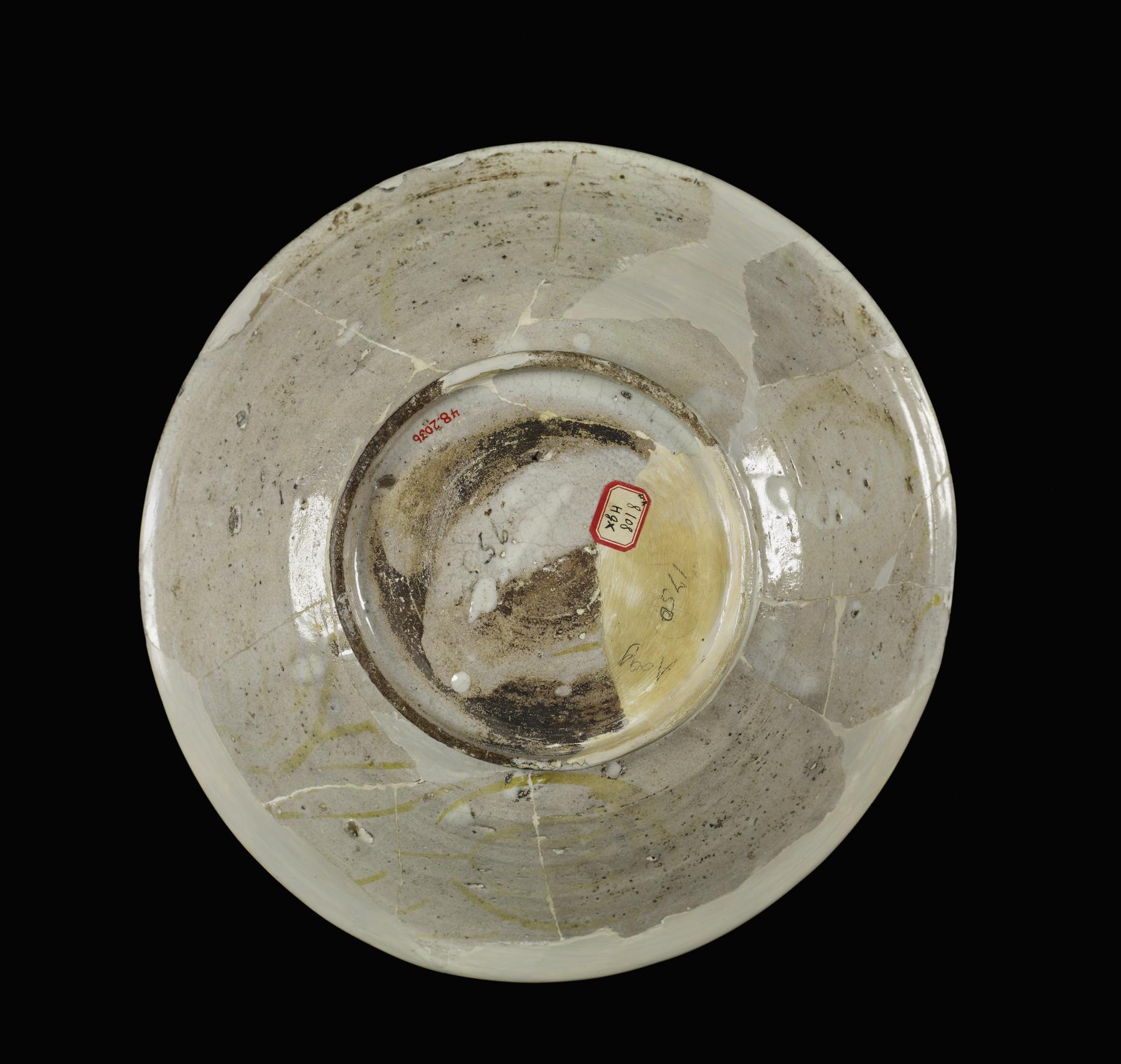Lusterware Plate with Bird Motif
(Islamic World )
Decorative lusterware was popular during the Fatimid Period (910-1171). The most important production place was in the cultural center of al-Fustad near the Fatimid capital al-Qahira (Cairo). This plate displays a typical motif of this time period: a bird in a central roundel with leaves and branches and a broad frame with leaf arabesques. Especially attractive are the variation of forms of the leaves and spiral-tendrils, which modify the rhytmic pattern, and the yellow-golden color of the painting.
Provenance
Provenance (from the French provenir, 'to come from/forth') is the chronology of the ownership, custody, or location of a historical object. Learn more about provenance at the Walters.
Estate of D.G. Kelekian [date and mode of acquisition unknown]; Walters Art Museum, 1951, by purchase.
Exhibitions
| 2019-2022 | Caravans of Gold, Fragments in Time: Art, Culture, and Medieval Trans-Saharan Exchange. Mary and Leigh Block Museum of Art, Northwestern University, Evanston; Aga Khan Museum, Toronto; National Museum of African Art, Smithsonian Institution, Washington. |
| 2015 | A Cosmopolitan Community: Muslims, Christians, & Jews in Old Cairo. The Oriental Institute of the University of Chicago, Chicago. |
| 2013-2014 | Threshold to the Sacred: The Ark Door of Cairo’s Ben Ezra Synagogue . The Walters Art Museum, Baltimore; Yeshiva University Museum, New York. |
Conservation
| Date | Description | Narrative |
|---|---|---|
| 10/5/1953 | Treatment | cleaned |
| 3/2/2006 | Treatment | cleaned; other; loss compensation |
Geographies
Egypt, Cairo (Place of Origin)
Measurements
H: 2 5/8 × Diam: 9 5/8 in. (6.7 × 24.5 cm)
Credit Line
Museum purchase, 1951
Location in Museum
Accession Number
In libraries, galleries, museums, and archives, an accession number is a unique identifier assigned to each object in the collection.
In libraries, galleries, museums, and archives, an accession number is a unique identifier assigned to each object in the collection.
48.2036




